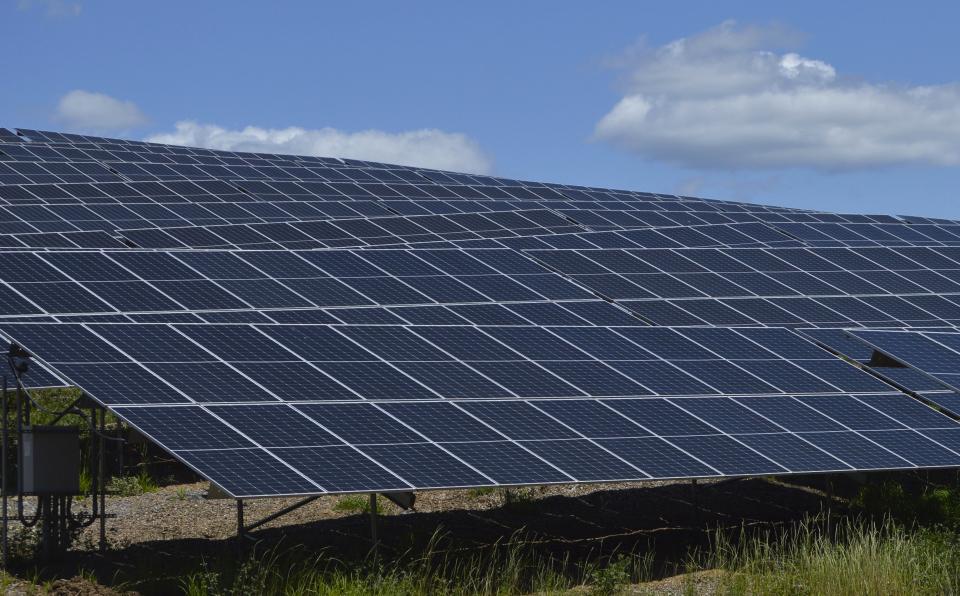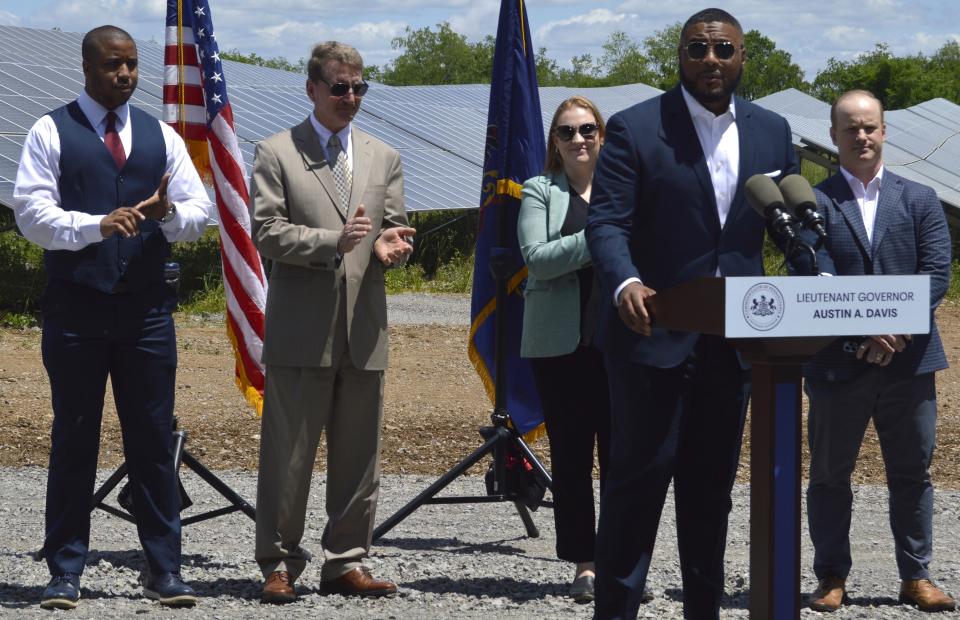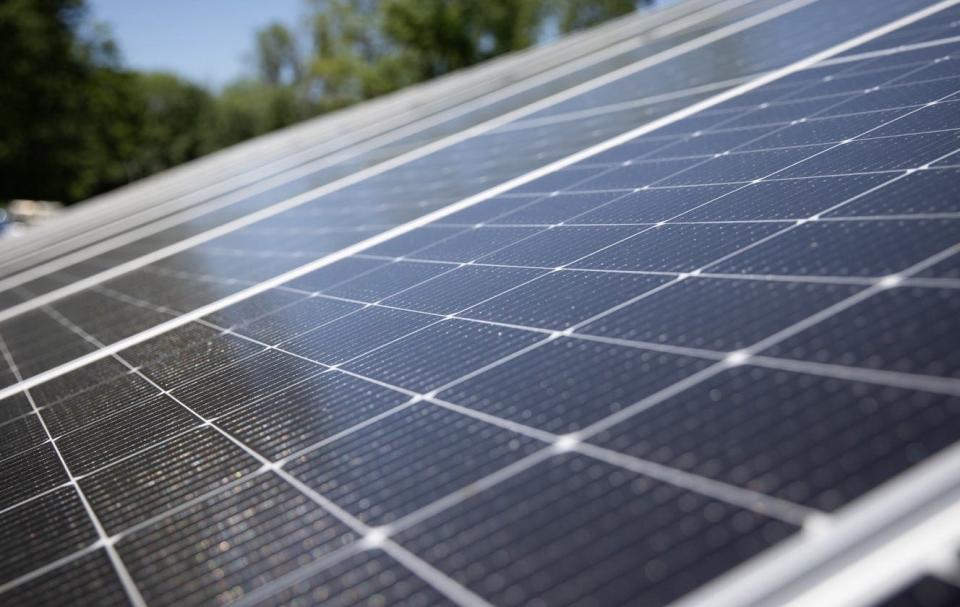State leaders, regulators push for solar on former mine lands at Greene Twp. event
GREENE TWP. — State and local leaders gathered on a sprawling Beaver County solar farm Thursday to tout the potential benefits of solar development on Pennsylvania’s former mine lands.
A new report published by Pennsylvania's Department of Environmental Protection revealed nearly 169,000 acres of abandoned mine lands statewide could potentially host solar facilities, including 27,000 reclaimed and 142,000 unreclaimed acres.
Solar center planned in Somerset County: Solar energy facility coming to Garrett
This, speakers said, could help meet the state’s renewable energy goals in the coming decade while taking the pressure off of farmland, forests and land with other potential uses.

Lt. Gov. Austin Davis joined DEP Acting Secretary Jessica Shirley, state Sen. Elder Vogel, R-47, New Sewickley Township, and Zabriawn Smith, Housing Opportunities of Beaver County executive director, at Pittsburgh-based Four Twelve Renewables’ recently opened utility-scale solar facility, BE Pine, in Greene Township.

The facility has 98,000 bifacial solar panels estimated to generate approximately 66 million kilowatt hours of electricity and provide households with $75 million in utility assistance over 35 years through a partnership with Dollar Energy Fund and its participating utilities.
Davis on Thursday noted Pennsylvania will receive nearly $245 million annually for the next 15 years from the federal Bipartisan Infrastructure Law to reclaim and treat abandoned mine land, and new Inflation Reduction Act tax incentives are expected to reduce the cost of solar development.
“Why can’t we put these two things together?” Davis said.

“So many communities, such as those here in Beaver County, or my hometown of McKeesport and all across southwestern and northeastern Pennsylvania, bear the scars of our state’s mining and industrial past,” he continued. “As the steel plants or coal mines closed, those communities often struggled to compete in the new economy, and local residents live in the shadow of brownfields or abandoned mine lands that can cause pollution.”
As chair of the Senate Agriculture & Rural Affairs Committee, Vogel said he supports saving more agricultural land from solar build-out, citing the thousands of acres needed to reach the state’s goal of 10% in-state solar electricity sales by 2030.
“It bothers me a lot when I see solar panels being built on prime farmland,” he said. “Having this new report come out from DEP ... if we can put solar panels on abandoned mine land, that’s great to hear. I’m looking forward to hearing more about that.”
The DEP Energy Programs Office commissioned the report, in part, to explore the challenges associated with siting solar facilities on previously mined lands and help reduce regulatory and administrative barriers. It references large grid-scale and commercial solar facilities alongside smaller community solar installations that require less land.
The report includes a number of recommendations, including establishing a goal of 9,000 acres, or 1,500 megawatts, of solar on previously mined sites by 2032 – about 14% of the 11,000 megawatts needed to reach the state’s 10% goal, said Shirley.
Other recommendations include passing legislation guiding solar development on previously mined sites, enabling community solar through legislation and further incentivizing solar on previously mined lands to address the additional costs associated with building on brownfields as opposed to greenfields.
“Our report shows that putting solar panels on just a small fraction of the suitable abandoned mine lands could produce enough electricity to power Pittsburgh,” said Shirley. “We can clean up these sites, put them back into use with solar energy and create jobs all at the same time.”
The full DEP report can be found at greenport.pa.gov.
This article originally appeared on Beaver County Times: State leaders, regulators push for solar on former mine lands

